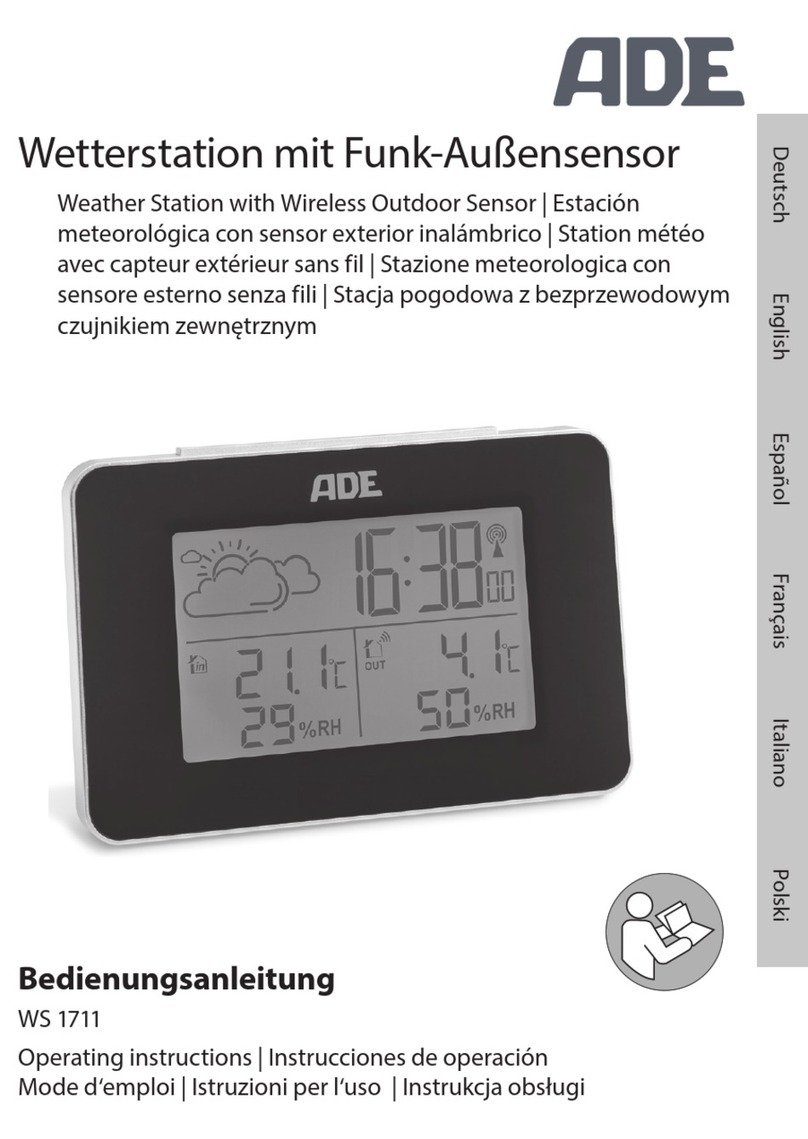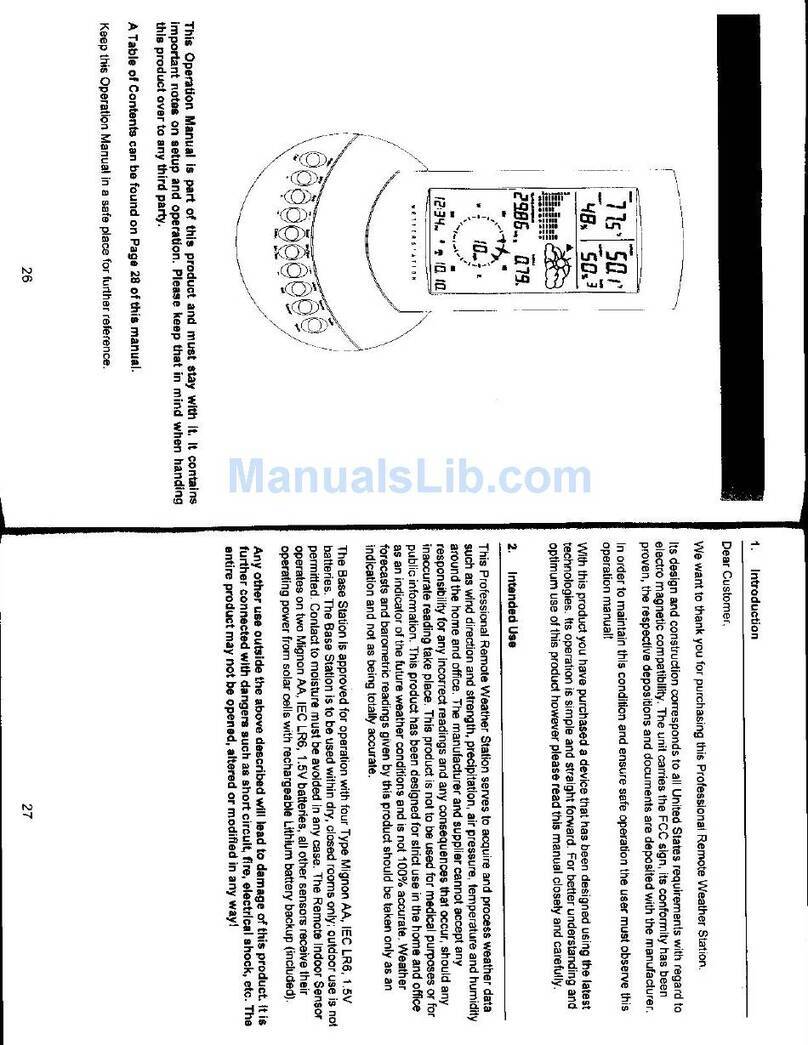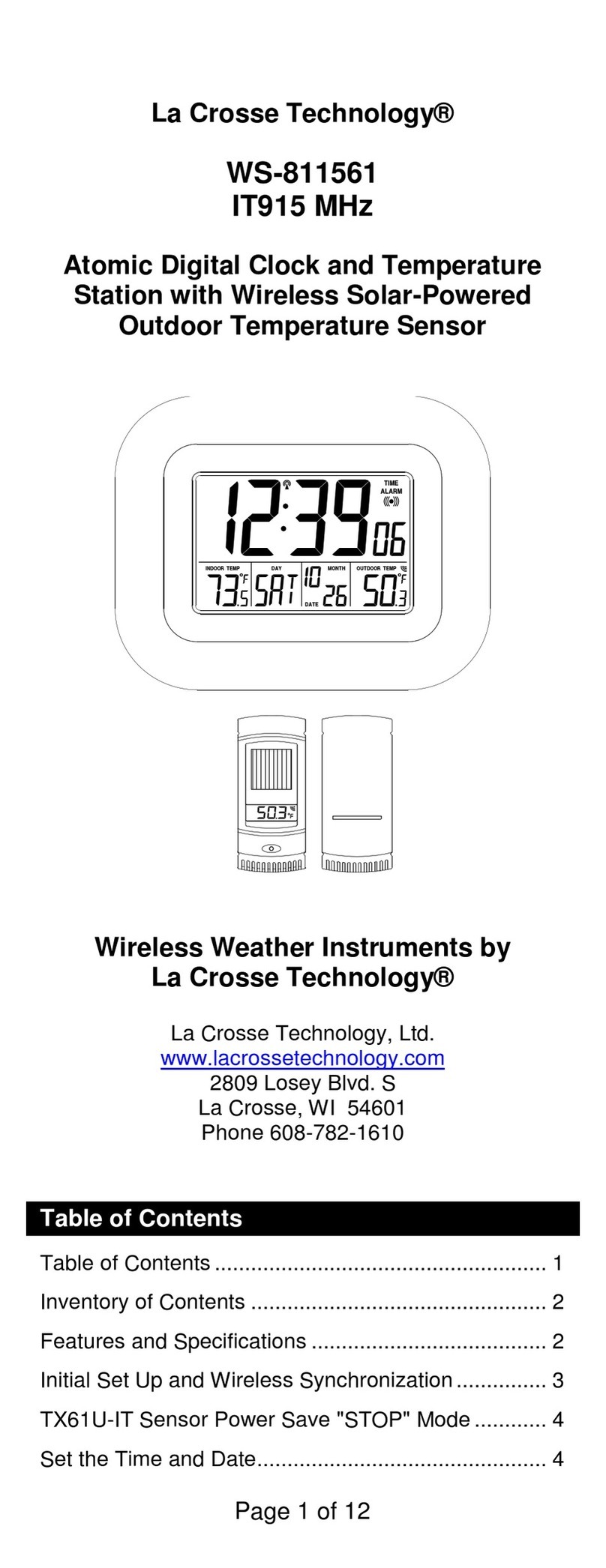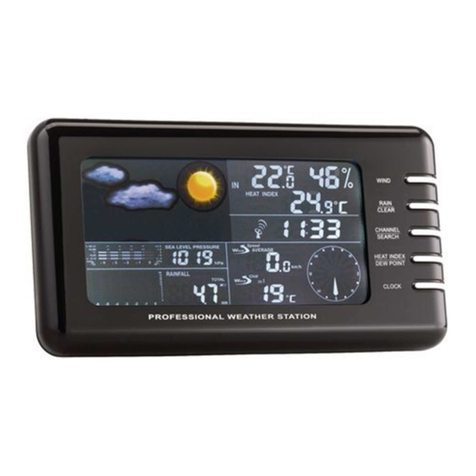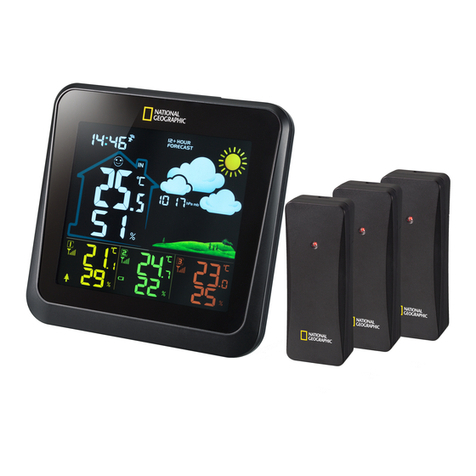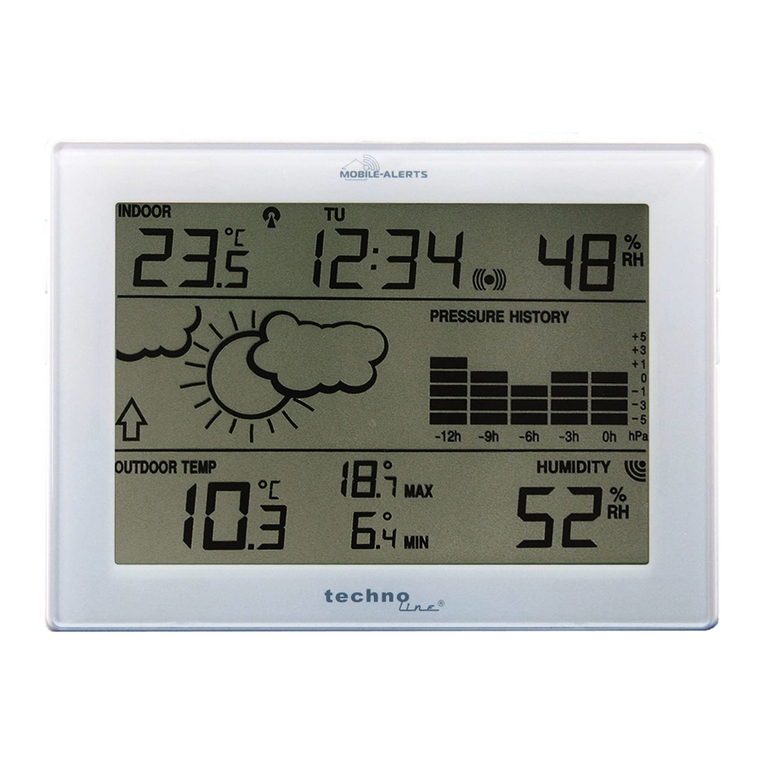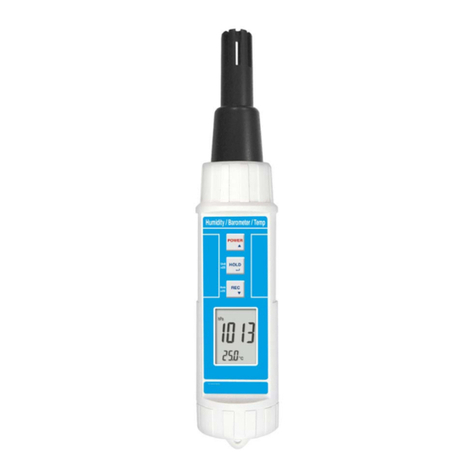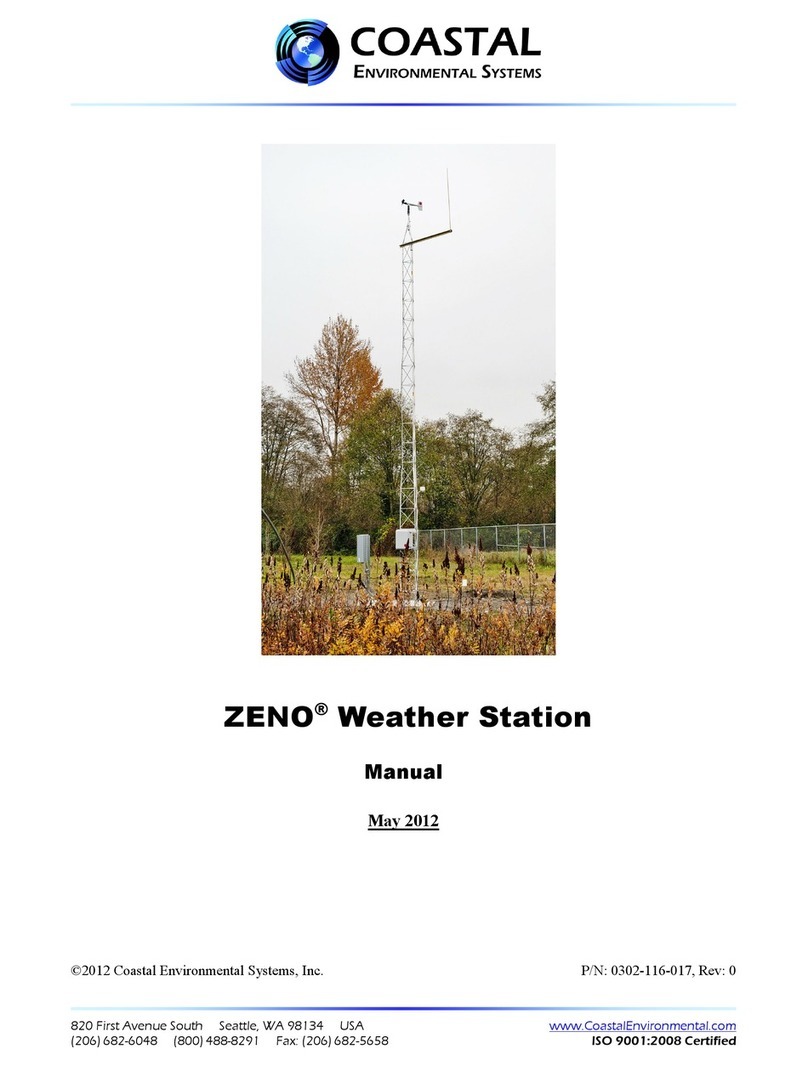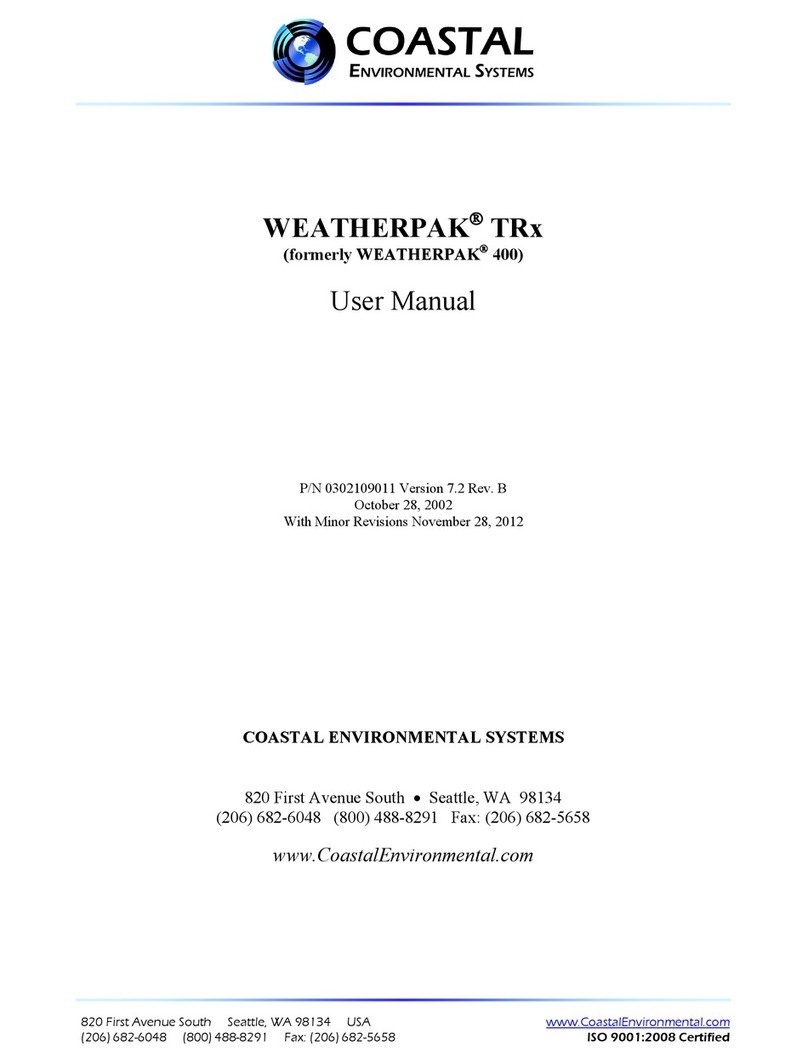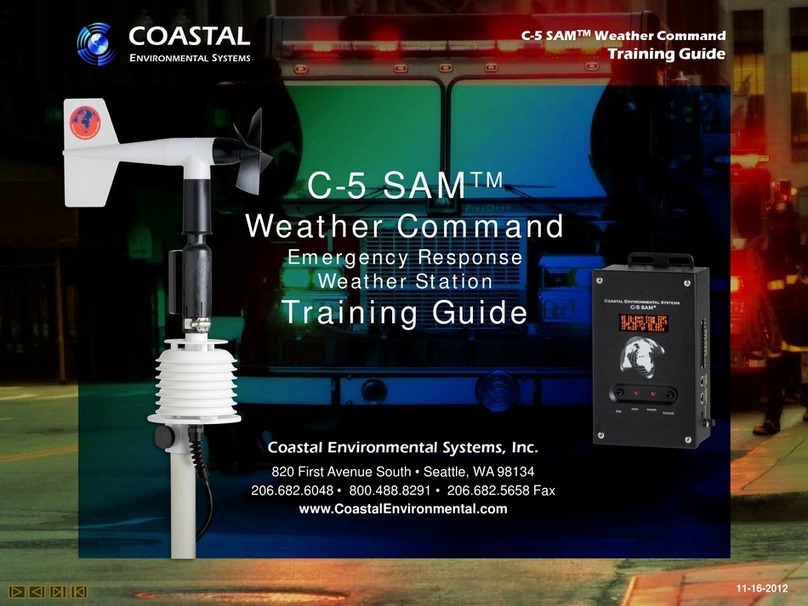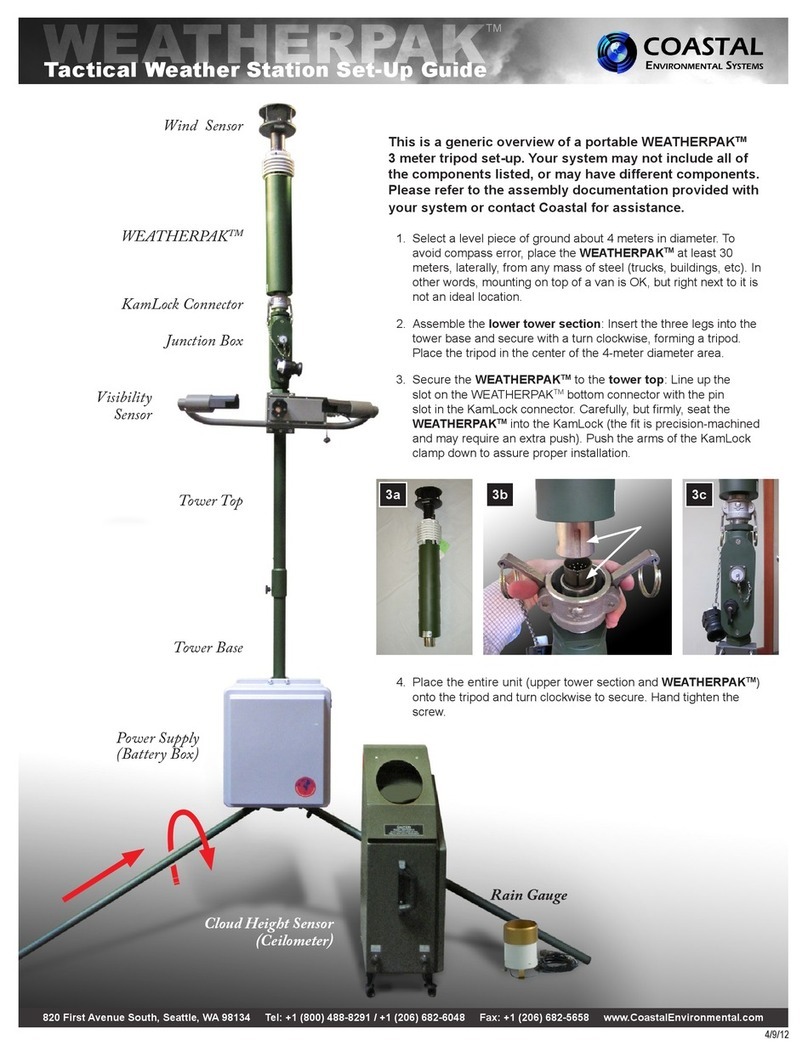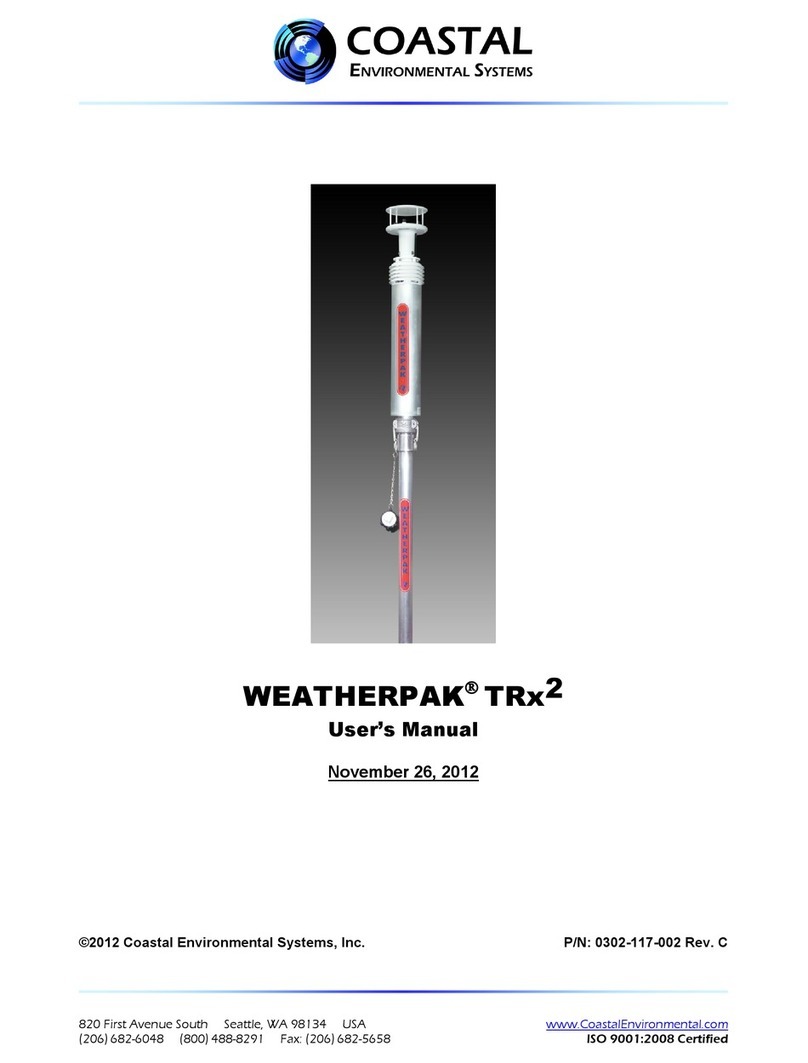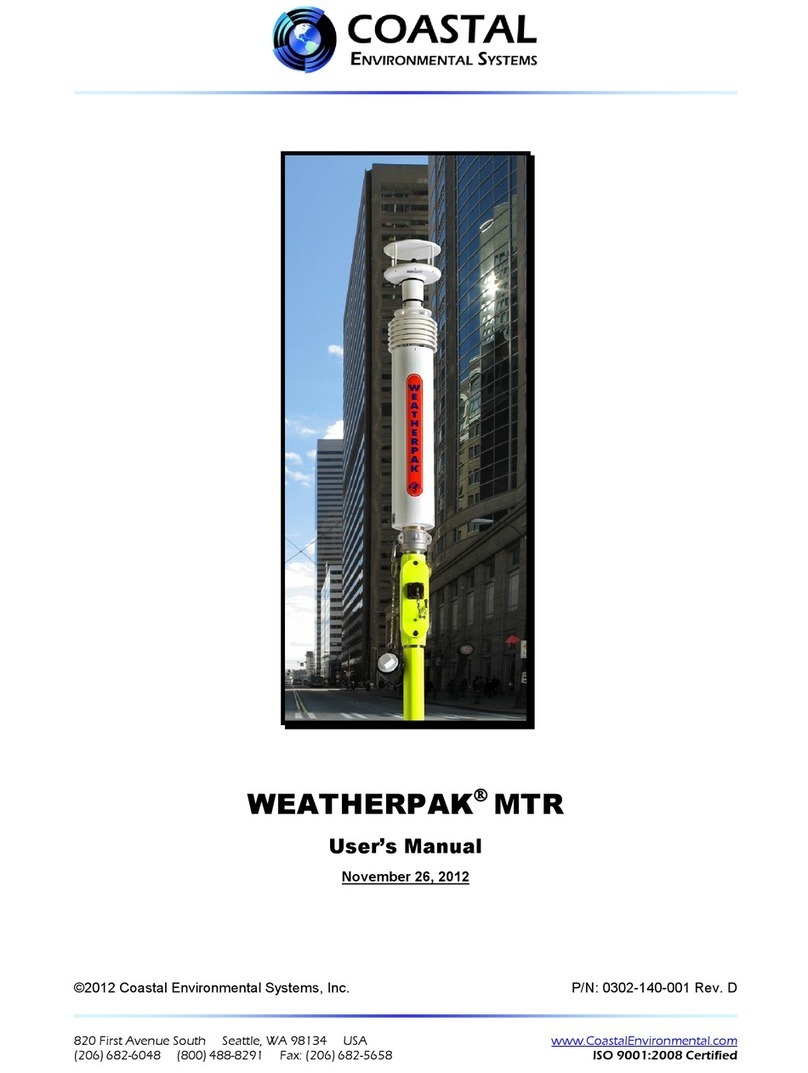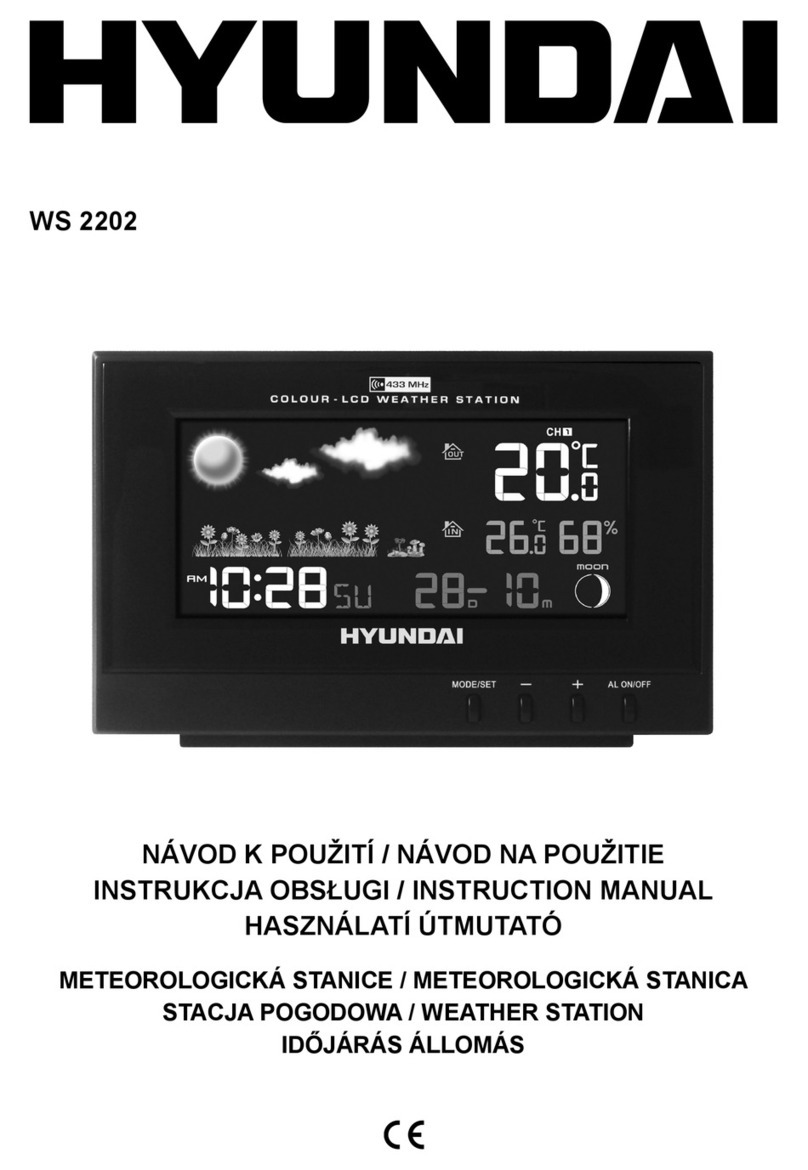
WEATHERPAK®EOC
Operations & Maintenance Manual
P/N: 0302-117-004 Rev. 0 ii
Table of Contents
Table of Contents ............................................................................................................ ii
List of Figures ................................................................................................................ iii
List of Tables .................................................................................................................. iv
IMPORTANT NOTES........................................................................................................ v
1. SYSTEM OVERVIEW................................................................................................. 1
1.1 Introduction......................................................................................................................................1
1.2 Siting Considerations .......................................................................................................................2
1.2.1 Compass Accuracy..................................................................................................................................... 2
1.2.2 Proper Wind Measurement........................................................................................................................ 2
1.3 Data Message ...................................................................................................................................2
2. METHOD OF OPERATION........................................................................................ 4
2.1 Introduction......................................................................................................................................4
2.2 System Power...................................................................................................................................4
2.2.1 Power Over Ethernet (POE)...................................................................................................................... 4
2.3 System Signal and Data Flow ..........................................................................................................5
2.4 Sensors .............................................................................................................................................6
2.4.1 Wind Sensor............................................................................................................................................... 6
2.4.2 Ambient Temperature / Optional Relative Humidity (AT/RH) Sensor ....................................................... 6
2.4.3 Barometer (Optional) ................................................................................................................................ 7
2.5 WEATHERPAK®EOC ...................................................................................................................7
2.5.1 ZENO®....................................................................................................................................................... 7
2.6 Software ...........................................................................................................................................8
3. MAINTENANCE ......................................................................................................... 9
3.1 Recommended Preventive Maintenance Schedule ..........................................................................9
3.2 Consumable Items Needed for Maintenance ...................................................................................9
3.3 Scheduled Maintenance .................................................................................................................10
3.3.1 Wind Sensor..............................................................................................................................................10
3.3.2 WEATHERPAK®EOC..............................................................................................................................10
4. COMPONENT REMOVAL AND INSTALLATION PROCEDURES ......................... 11
4.1 Introduction....................................................................................................................................11
4.2 Wind Sensor...................................................................................................................................11
4.2.1 Removal ....................................................................................................................................................11
4.2.2 Installation................................................................................................................................................11
4.3 WEATHERPAK®EOC .................................................................................................................12
4.3.1 Removal ....................................................................................................................................................12
4.3.2 Installation................................................................................................................................................12
